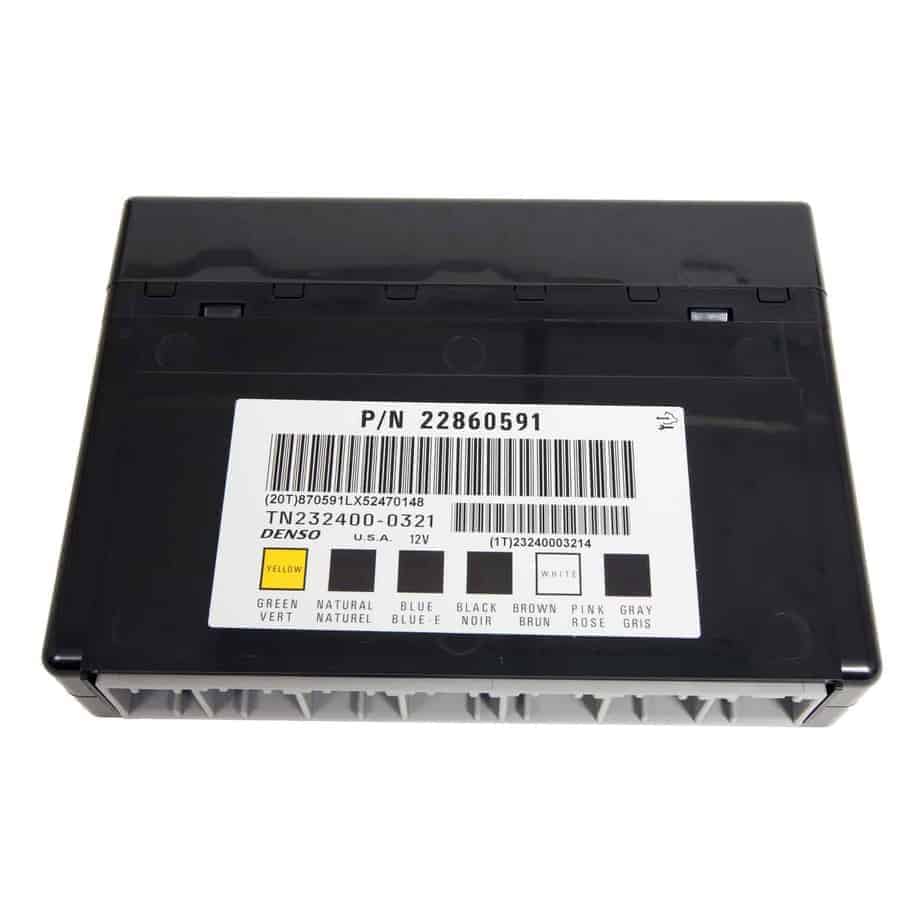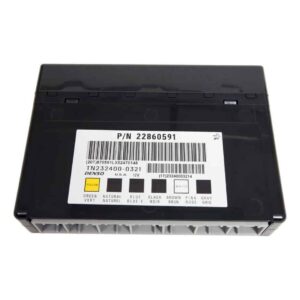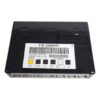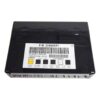Restore Full Electrical Function to Your GMC Acadia
Is your 2007-2012 GMC Acadia experiencing a host of bizarre and frustrating electrical problems? From power windows and locks with a mind of their own to a security light that won’t turn off, these are classic signs of a failing Body Control Module (BCM). As the central command center for your vehicle’s body electronics, a faulty BCM can disrupt dozens of functions, making your daily drive unreliable and stressful. This replacement BCM, part number 25934762, is the definitive solution to restore order and get your vehicle operating as it should.
We take the guesswork and hassle out of the repair. Unlike a generic module from a parts store or salvage yard, this BCM arrives at your door fully programmed to your vehicle’s specific VIN. We load the latest GM software updates, ensuring optimal performance and compatibility right out of the box. This critical step saves you a costly trip to the dealership for programming, making it a smart choice for both professional mechanics and savvy DIYers.
Common Signs of a Failing BCM
A failing BCM can be tricky to diagnose because the symptoms seem random. If you’re experiencing several of the following issues, your BCM is the likely culprit. Over my two decades in diagnostics, I’ve seen these modules cause headaches that are easily solved with the right part.
- ✔ Power windows, door locks, or mirrors operating intermittently or not at all.
- ✔ Interior or exterior lights flickering, staying on, or not working correctly.
- ✔ The security or anti-theft system light is illuminated, potentially causing a no-start condition.
- ✔ The radio or instrument cluster displays behave erratically.
- ✔ Remote keyless entry (fob) stops working.
- ✔ Communication error codes stored in the system, such as U0140 (Lost Communication With Body Control Module).
A Technician’s Notebook
I remember a 2011 Acadia that came into the shop with a truly baffling complaint. The owner said every few days, the battery would be dead. We tested the battery and alternator—both were fine. No obvious parasitic draw. Then, he mentioned that sometimes his power liftgate would open on its own. That was the key. We hooked up a scan tool and found intermittent communication faults with the BCM. It was randomly waking up and activating circuits, including the liftgate module, creating a slow drain. A new, properly programmed BCM solved the phantom draw and the liftgate issue in one shot. It’s a perfect example of how one failing module can create a cascade of seemingly unrelated problems.
Your Straightforward Installation Guide
Installing your new BCM is a manageable job for someone with basic mechanical skills. Since we handle the programming, you can avoid complex dealership procedures.
- Safety First: Always disconnect the negative terminal from your vehicle’s battery before starting any electrical work.
- Locate the BCM: On the 2007-2012 Acadia, the BCM is typically located on the left-hand (driver’s) side of the dashboard, often behind the lower dash panel near the steering column.
- Remove Trim Panels: Carefully remove any plastic trim panels necessary to access the module. They are usually held in with clips or a few small screws.
- Disconnect and Remove: Unplug the electrical connectors from the old BCM. They have locking tabs that need to be depressed. Once disconnected, unbolt or unclip the module from its mounting bracket.
- Install the New BCM: Mount your new, pre-programmed BCM in the same location and reconnect all electrical connectors, ensuring they click securely into place.
- Final Steps: Reinstall the trim panels and reconnect the negative battery terminal. Start the vehicle and test all functions (windows, locks, lights, etc.).
Important Post-Installation Information
While this module is programmed for your vehicle, some systems may require a ‘handshake’ to recognize the new BCM. This is normal. You may need a professional scan tool to perform the following if specific warning lights appear:
- Airbag System Sync: If the airbag (SRS) light is on, a ‘Setup SDM Primary Key in BCM’ procedure is needed to sync the modules.
- Brake Pedal Position Relearn: A brake pedal sensor recalibration might be required to ensure proper brake light and traction control operation.
Disclaimer: Procedures can vary. Always consult a factory service manual or a qualified technician for guidance specific to your vehicle.
Verified Vehicle Compatibility
This BCM is a direct replacement for a wide range of GM vehicles and interchanges with numerous part numbers, ensuring a perfect match. Please confirm your vehicle is on this list and that your old module matches one of the part numbers below.
Replaces Part Numbers: 10382479, 15093910, 15276271, 15299986, 15819552, 15828601, 15837419, 15872388, 15872421, 15880684, 15921352, 15921353, 15948438, 15948439, 20815898, 20839063, 20864767, 20864768, 20921435, 20921436, 20935349, 22860591, 25826124, 25826125, 25847588, 25847589, 25892622, 25910474, 25934762, 25934763, 95151084
Frequently Asked Questions
Is this part truly plug-and-play?
Because we program it to your VIN before shipping, it is as close to plug-and-play as possible. It eliminates the need for dealership programming. However, as mentioned, some vehicles may require a simple relearn procedure for the airbag or brake systems if a warning light appears after installation.
How do I provide my VIN?
After you complete your purchase, you will need to send us your 17-digit Vehicle Identification Number (VIN). We cannot program and ship the module without it.
Do I need to return my old BCM?
No, there is no core charge for this part. You can keep your original module.
What tools are needed for the relearn procedures?
The Airbag System Sync and Brake Pedal Position Relearn typically require a professional-grade bidirectional scan tool, like a Tech 2, Snap-on, or Autel scanner. Most local repair shops have this equipment.
Will this fix my ‘Service StabiliTrak’ message?
While a failing BCM can sometimes contribute to traction or stability control issues due to communication problems or faulty sensor inputs (like the brake pedal position), that message can also be caused by many other components. It’s best to have the codes scanned to confirm the source of the problem.



